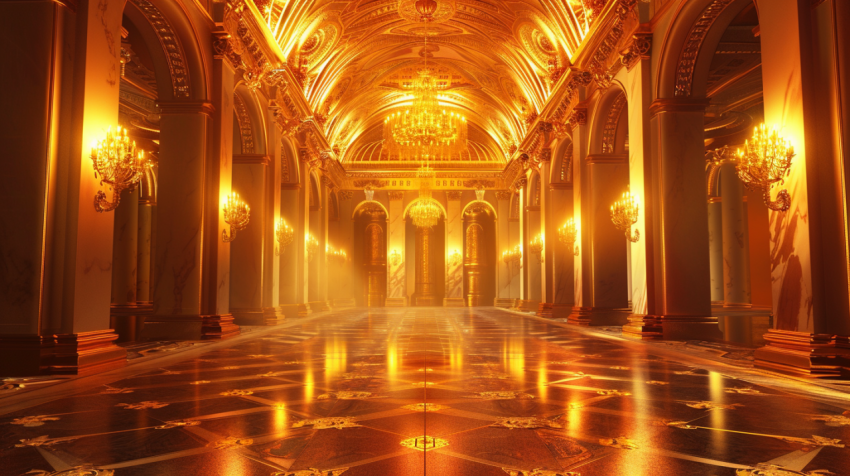Palaces: A Journey Through Royal Grandeur and History
-
Palaces, the epitome of royal grandeur and architectural opulence, have captivated the human imagination for centuries. These magnificent residences, built for emperors, kings, queens, and other rulers, are not just homes but powerful symbols of authority, wealth, and cultural achievement. This article takes you on a journey through the history and splendor of palaces, exploring their diverse styles, architectural features, and the fascinating stories of the royalty who inhabited them.
Early Palaces and the Dawn of Royal Residences
The concept of a palace, a grand residence for a ruler, can be traced back to ancient civilizations.
- Ancient Mesopotamia: The Ziggurats of Mesopotamia, though primarily religious structures, also served as administrative centers and may have included royal living quarters.
- Ancient Egypt: The pharaohs of Egypt resided in grand palaces, often integrated with temple complexes. The Palace of Malkata, built for Amenhotep III, is a notable example.
- Minoan Crete: The Palace of Knossos, with its elaborate frescoes and complex layout, is a testament to the advanced civilization of Minoan Crete.
Palaces of the Classical World
The classical civilizations of Greece and Rome developed distinct palace architecture.
- Greek Palaces: While Greek city-states were often ruled by councils or assemblies, some rulers, like the Macedonian kings, built palaces. The Palace at Vergina (Aigai) is a well-preserved example.
- Roman Imperial Palaces: Roman emperors constructed vast and luxurious palaces, both in Rome and throughout the empire. The Domus Aurea (Golden House) of Nero and the Palace of Diocletian in Split, Croatia, are famous examples.
Byzantine and Islamic Palaces
The Byzantine Empire and the Islamic world produced stunning palaces that reflected their unique artistic and architectural traditions.
- Byzantine Palaces: The Great Palace of Constantinople was the heart of the Byzantine Empire for centuries, a complex of buildings that included residences, churches, and administrative offices.
- Islamic Palaces: Islamic palaces, such as the Alhambra in Granada, Spain, and the Topkapi Palace in Istanbul, Turkey, are renowned for their intricate geometric patterns, lush gardens, and elegant courtyards.
Medieval and Renaissance Palaces in Europe
During the medieval period, fortified castles often served as royal residences. The Renaissance saw a revival of classical architecture and the construction of grand palaces.
- Medieval Castles: Castles like the Tower of London and the Château de Vincennes near Paris were not just fortresses but also royal residences.
- Renaissance Palaces: The Renaissance witnessed the construction of magnificent palaces throughout Europe. The Palazzo Pitti and the Palazzo Vecchio in Florence, the Louvre in Paris, and El Escorial in Spain are prime examples.
Baroque and Rococo Palaces
The Baroque and Rococo periods were characterized by ornate decoration, dramatic architecture, and a sense of theatrical grandeur.
- Palace of Versailles: The Palace of Versailles, built by Louis XIV of France, is the quintessential Baroque palace, a symbol of absolute monarchy and a masterpiece of architecture and landscape design.
- Schönbrunn Palace: Schönbrunn Palace in Vienna, Austria, is another magnificent example of Baroque architecture, with its grand facade, elaborate gardens, and opulent interiors.
- Winter Palace: The Winter Palace in St. Petersburg, Russia, built in the Rococo style, served as the official residence of the Russian emperors.
Asian Palaces
Asian civilizations have a rich tradition of palace architecture, reflecting their diverse cultures and imperial histories.
- Forbidden City: The Forbidden City in Beijing, China, was the imperial palace for over 500 years, a vast complex of buildings, courtyards, and gardens.
- Himeji Castle: Himeji Castle in Japan, though primarily a fortress, also served as a residence for feudal lords and is renowned for its elegant white facade.
- Mysore Palace: Mysore Palace in India, a blend of Indo-Saracenic, Rajput, and Gothic styles, is a dazzling example of Indian palace architecture.
19th and 20th Century Palaces
The 19th and 20th centuries saw the construction of new palaces and the adaptation of existing ones to new purposes.
- Neuschwanstein Castle: Neuschwanstein Castle in Germany, built by King Ludwig II of Bavaria, is a romantic and fantastical palace inspired by medieval architecture.
- Buckingham Palace: Buckingham Palace in London, originally a large townhouse, became the official residence of the British monarch in the 19th century.
- Rashtrapati Bhavan: Rashtrapati Bhavan in New Delhi, India, formerly the Viceroy's House, is now the official residence of the President of India.
Palaces Today: Museums and Symbols of National Heritage
Many palaces today are no longer used as royal residences but have been transformed into museums, cultural centers, or government buildings.
- Palaces as Museums: The Louvre, Versailles, the Hermitage (Winter Palace), and many other former palaces now house world-renowned art collections and are major tourist attractions.
- Palaces as Symbols of National Identity: Palaces often play an important role in national identity and heritage, representing a country's history, culture, and architectural achievements.
Conclusion
Palaces are more than just grand buildings; they are windows into the past, offering insights into the lives of royalty, the evolution of architectural styles, and the history of nations. From the ancient palaces of Mesopotamia and Egypt to the opulent creations of the Baroque and Rococo periods, these magnificent residences continue to inspire awe and wonder. Today, as many palaces serve as museums and cultural landmarks, they continue to play a vital role in preserving and sharing our shared human heritage.
famous palaces, royal residences, palace architecture, history of palaces, European palaces, Asian palaces, Baroque palaces, Renaissance palaces, medieval castles, Islamic palaces, Versailles, Buckingham Palace, Forbidden City, Alhambra, Topkapi Palace, Winter Palace, Neuschwanstein Castle, Schönbrunn Palace, world heritage sites, palace museums, royal families, famous castles


